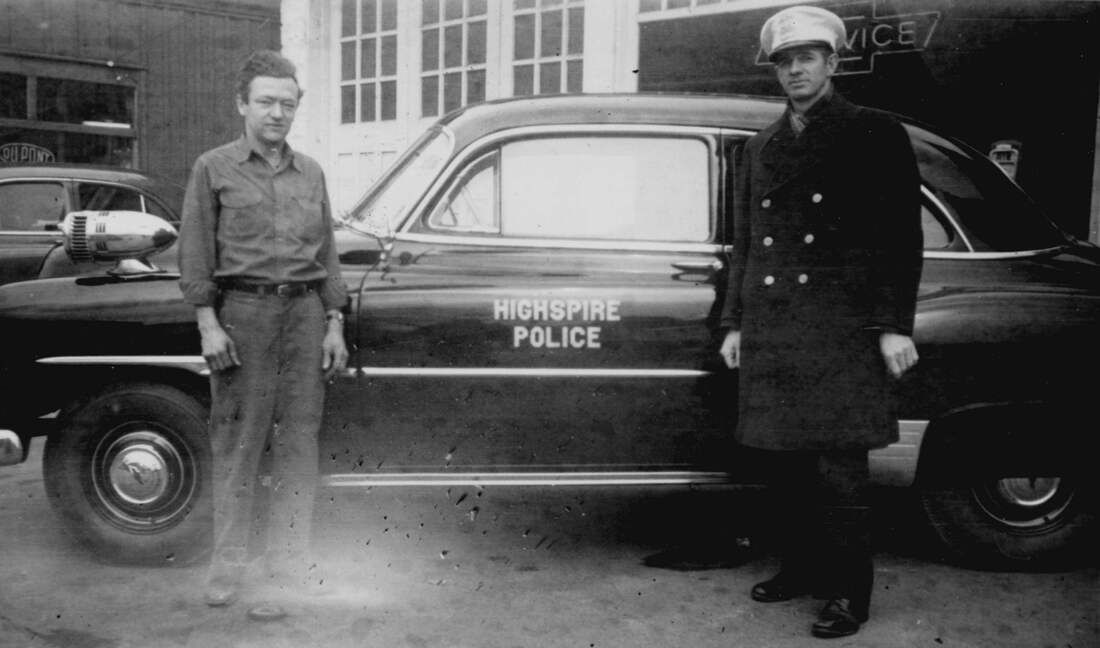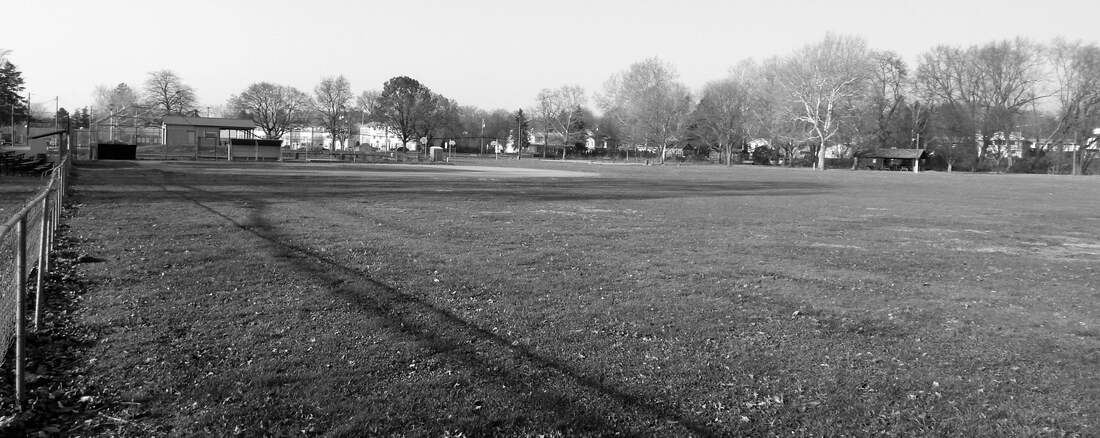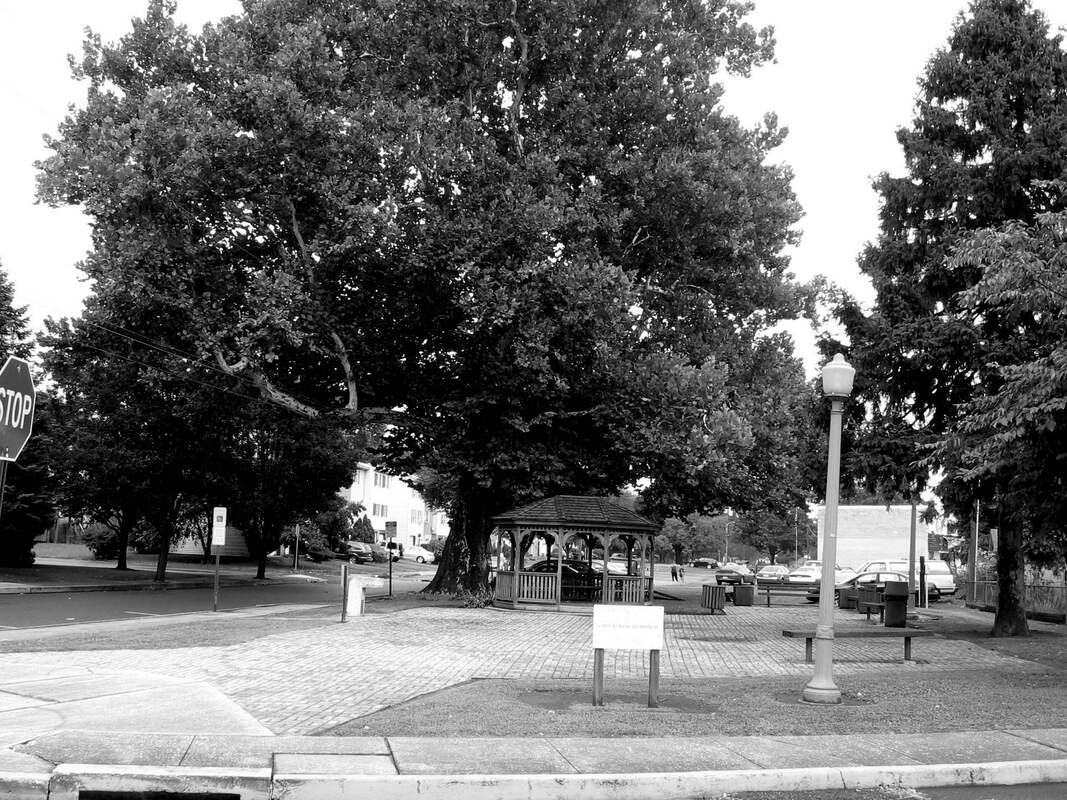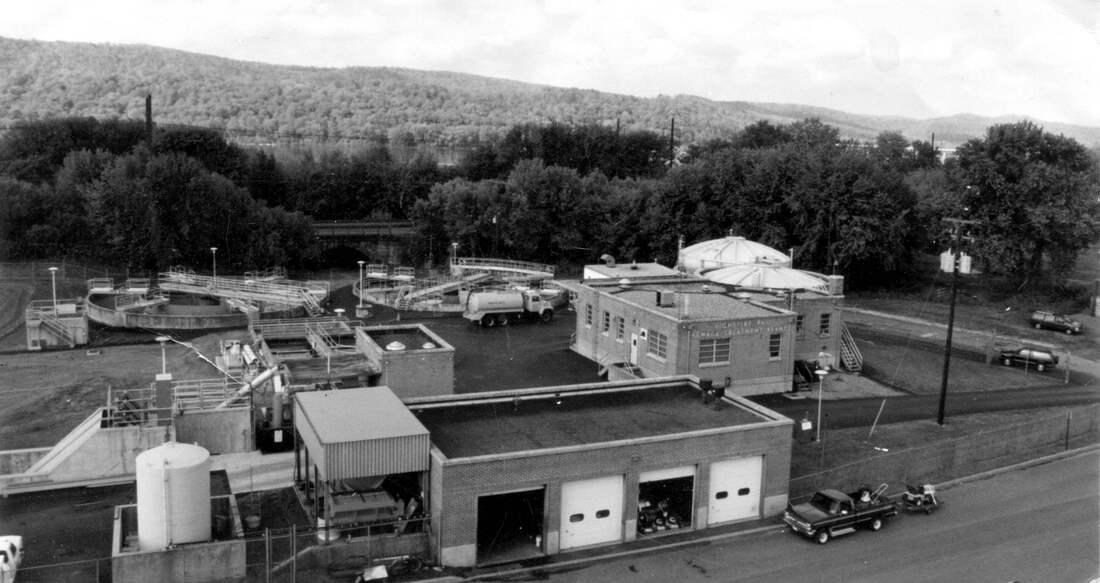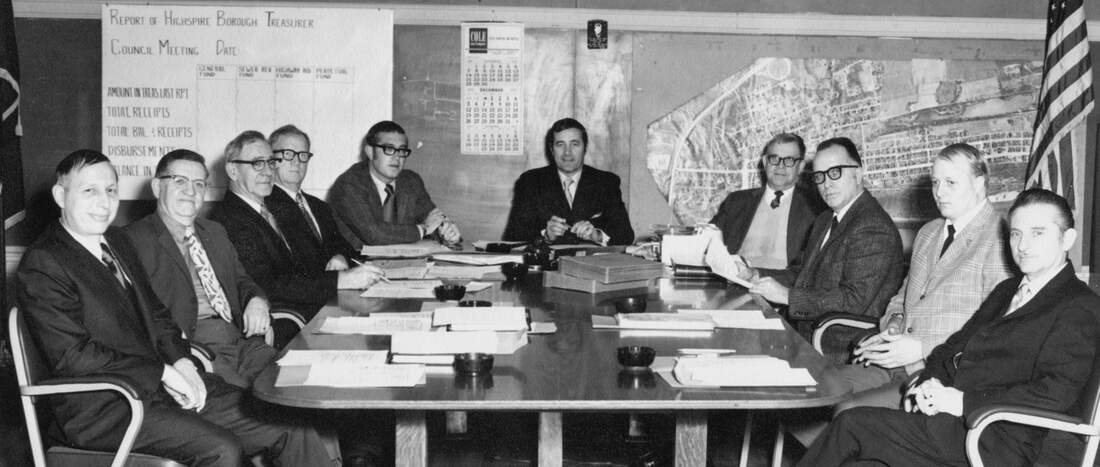Highspire Borough
Although the town of Highspire was laid out in 1814, there was no attempt to incorporate the village into a municipality until after the Civil War. By act of the Pennsylvania General Assembly on Feb. 7, 1867, Highspire was incorporated as a borough. However, the General Assembly annulled that incorporation just 14 months later, on April 8, 1868.
In 1902 many Highspire residents felt that the privileges of incorporation would allow them to pursue infrastructure improvements and community services. They sought a charter but it was rejected by the court because it would have included part of land occupied by a new section of the Pennsylvania Steel Co., which objected to having its plant in two different boroughs.
In early 1903 the residents revised their plan and engaged an engineer to run lines and form plans for the borough limits, avoiding the conflict with Pennsylvania Steel. On Dec. 15, 1903, an application was made to the Dauphin County Court to incorporate Highspire as a borough. Highspire was officially incorporated on Dec. 23, 1903. The first municipal election was held on Tuesday, Feb. 16, 1904, to fill the offices of burgess, auditor, council (six), school director (six), tax collector, assessor, justice of the peace, high constable, constable, judge of election, and inspector of election.
One of the first improvements was a sewer system that discharged sewage directly into the Susquehanna River. In the May 19, 1905, edition of The Patriot it was reported that “R. Buser is making the first tap on the Borough sewer.” In the June 24 edition it reported that “Burgess Eli Ruth is making a tap on the main sewer that flows into the river.”
As described in Chapter 2, another early initiative was the elimination of the bridge over the abandoned canal bed. After much delay due to legal issues over property ownership, this was finally accomplished in 1909. Immediately thereafter, the borough acquired sheds that protruded into Second Street near the southwest corner of the bridge in order to remove them and make Second Street straight through the old canal crossing area.
In 1915 a contract was awarded for the construction of sidewalks, and in 1916 a contract for street lighting was awarded. In 1919 the trolley tracks on Second Street were placed below grade and the road surface was macadamized. In 1927 a $30,000 bond was issued and all the existing streets in the borough were hard surfaced. During the decade of the 1940s approximately $60,000 was spent on building and resurfacing streets and alleys. In the late 1940s Borough Council worked with state Senator M. Harvey Taylor to convince the state secretary of highways to fund and build a three-lane concrete highway through the borough.
When Highspire was first incorporated, law enforcement duties were handled by the elected constables. In 1906 Garrett Kline became the first uniformed police officer. Prior to the 1940s police coverage was on a part-time basis and all patrols were on foot. In the 1940s, to cope with the high volume of traffic and to enforce traffic codes, the borough purchased its first police car and equipped it with a radio telephone. Under Chief Amos “Ace” Miller, police coverage also increased to two shifts per day. By the mid-1960s, the department had grown to five full-time officers, including the chief.
In 1902 many Highspire residents felt that the privileges of incorporation would allow them to pursue infrastructure improvements and community services. They sought a charter but it was rejected by the court because it would have included part of land occupied by a new section of the Pennsylvania Steel Co., which objected to having its plant in two different boroughs.
In early 1903 the residents revised their plan and engaged an engineer to run lines and form plans for the borough limits, avoiding the conflict with Pennsylvania Steel. On Dec. 15, 1903, an application was made to the Dauphin County Court to incorporate Highspire as a borough. Highspire was officially incorporated on Dec. 23, 1903. The first municipal election was held on Tuesday, Feb. 16, 1904, to fill the offices of burgess, auditor, council (six), school director (six), tax collector, assessor, justice of the peace, high constable, constable, judge of election, and inspector of election.
One of the first improvements was a sewer system that discharged sewage directly into the Susquehanna River. In the May 19, 1905, edition of The Patriot it was reported that “R. Buser is making the first tap on the Borough sewer.” In the June 24 edition it reported that “Burgess Eli Ruth is making a tap on the main sewer that flows into the river.”
As described in Chapter 2, another early initiative was the elimination of the bridge over the abandoned canal bed. After much delay due to legal issues over property ownership, this was finally accomplished in 1909. Immediately thereafter, the borough acquired sheds that protruded into Second Street near the southwest corner of the bridge in order to remove them and make Second Street straight through the old canal crossing area.
In 1915 a contract was awarded for the construction of sidewalks, and in 1916 a contract for street lighting was awarded. In 1919 the trolley tracks on Second Street were placed below grade and the road surface was macadamized. In 1927 a $30,000 bond was issued and all the existing streets in the borough were hard surfaced. During the decade of the 1940s approximately $60,000 was spent on building and resurfacing streets and alleys. In the late 1940s Borough Council worked with state Senator M. Harvey Taylor to convince the state secretary of highways to fund and build a three-lane concrete highway through the borough.
When Highspire was first incorporated, law enforcement duties were handled by the elected constables. In 1906 Garrett Kline became the first uniformed police officer. Prior to the 1940s police coverage was on a part-time basis and all patrols were on foot. In the 1940s, to cope with the high volume of traffic and to enforce traffic codes, the borough purchased its first police car and equipped it with a radio telephone. Under Chief Amos “Ace” Miller, police coverage also increased to two shifts per day. By the mid-1960s, the department had grown to five full-time officers, including the chief.
Police Chief Amos “Ace” Miller and Martin Gingerich are standing by an early 1950s Highspire Police car. The picture was taken at the Highspire Garage, the local Chevrolet dealership at 186 Second St.
Highspire has always had fine recreational facilities for a community its size. In the early 1900s, before the property was put to commercial use as a service station, fairs and carnivals were held frequently at Kauffman’s Park on the west corner of Second and Paxton Streets. Land for the largest park and main recreational venue, Memorial Park, was acquired in several parcels during the early 1900s. The last parcel to be acquired was the narrow strip of land where butcher Paul Keefer’s chicken coops had stood prior to their destruction in a fire in February 1959. In the 1930s remnants of the old canal were still visible on the Memorial Park grounds. During the Great Depression, a Works Progress Administration (WPA) project provided for the filling and grading of the athletic fields at the park. In 1940 the old canal bed and reservoir basin east of Ann Street was purchased by the borough. That area has been developed into a 37-acre wetland and nature park with a 1.3-mile walking or biking trail around the north side of the reservoir.
Centrally located Memorial Park is the second-largest park in the borough and the venue for many community events. It has been the home of Highspire baseball since the late 1800s.
Seventy years after its acquisition by the borough, the old canal reservoir was finally developed into a 37-acre wetland and nature park with a 1.3-mile walking or biking trail around the north side.
Today the borough maintains six recreational areas: Memorial Park, Reservoir Park, Charles Street Park, Paxton Street Community Park, Ann Street Ball Field, and the Eshleman Street Playground.
The Paxton Street Community Park occupies the southeast corner of Paxton and Broad streets, the previous location of the original fire station built in 1911. The Pennsylvania Canal would have run through this location. The large sycamore tree sat on the north bank of the canal and saw many canal boats pass by.
For many years, starting around 1950, Highspire had a supervised ten-week summer playground program for children at Memorial Park. Equipment, materials and labor to build the playground and field house were donated by Highspire businesses and civic clubs. The playground supervisor’s salaries were jointly paid by the borough and the school board. A July 1954 newspaper article reported that 460 children were registered and average daily attendance was 275.
Highspire was the first borough of its size to offer garbage and ash collection starting in 1930. At first, the cost was covered out of general tax revenue. The borough continued to provide the service until 1945, when the collection was let out on contract. The current refuse collection and recycling contractor for Highspire Borough is Penn Waste Inc.
The Highspire Borough Authority was created in 1948 to finance and construct facilities as directed by the Borough Council for the betterment and improvement of the community. The authority consists of five members appointed by the Borough Council who serve without compensation. Starting immediately after its creation, it took action to issue bonds and award contracts for construction of a sanitary sewer system. The collection system covered the borough and parts of Lower Swatara Township. In 1960 the authority financed and built a sewage treatment plant at the foot of Railroad Street beside the railroad tracks. It has undergone two major expansions, in 1987 and 2011, to keep up with the latest state and federal water quality regulations. The current plant has a capacity of two million gallons of waste water per day, and services eleven miles of sanitary sewer lines. In 1962 the authority sold the Lower Swatara Township system to the township and entered into an agreement with the township for treatment of its sewage.
Highspire was the first borough of its size to offer garbage and ash collection starting in 1930. At first, the cost was covered out of general tax revenue. The borough continued to provide the service until 1945, when the collection was let out on contract. The current refuse collection and recycling contractor for Highspire Borough is Penn Waste Inc.
The Highspire Borough Authority was created in 1948 to finance and construct facilities as directed by the Borough Council for the betterment and improvement of the community. The authority consists of five members appointed by the Borough Council who serve without compensation. Starting immediately after its creation, it took action to issue bonds and award contracts for construction of a sanitary sewer system. The collection system covered the borough and parts of Lower Swatara Township. In 1960 the authority financed and built a sewage treatment plant at the foot of Railroad Street beside the railroad tracks. It has undergone two major expansions, in 1987 and 2011, to keep up with the latest state and federal water quality regulations. The current plant has a capacity of two million gallons of waste water per day, and services eleven miles of sanitary sewer lines. In 1962 the authority sold the Lower Swatara Township system to the township and entered into an agreement with the township for treatment of its sewage.
Installation of the sanitary sewer line on Jury Street in the late 1940s.
Bird’s-eye view of the Highspire Sewage Treatment plant in 1995.
After the Highspire East school building closed in 1961, the borough acquired the building on Eshleman Street. Between 1964 and 1968, borough operations were moved into this building. In 1993 the first major renovation was completed, and in 2010 another major renovation was initiated to move record storage out of the basement where there was risk from floods, and to add a meeting room, multipurpose room, restroom, lunchroom and work space. The project also upgraded the heating and air conditioning system and added a natural gas-powered emergency generator. The project was completed in 2013 at a total cost of $726,653.
Between 1964 and 1968 the Highspire Borough offices were moved to the former Highspire East school building. A two-year renovation project was completed in 2013 to alleviate overcrowded office space, preserve borough records and add a meeting room.
One hundred and ten years after its incorporation, Highspire continues to operate as a borough under the Pennsylvania Borough Code. In accordance with the code the title of burgess was changed to mayor in 1961; the duties and responsibilities of this office have changed many times over the years. The standard borough government is a weak-mayor form, with a seven-member elected council as the governing body. The tax collector, constable, election judge and inspector of election also are elected, and their powers are independent of the council. Other officials are appointed by council. Since 1973 the chief administrative officer has been a borough manager appointed by council who is responsible for carrying out the policies and enforcing the ordinances enacted by the council.
Highspire Borough Council meeting in 1972. From left to right: James Albert, Robert Keifer, Samuel Miller, Samuel Wetzel, Solicitor James Pannebaker, Mayor Earl Hoffman Sr., William Colver, Donald Beard, Joseph Bechtel, and Gerald Hawkins
